As the capital of China, it is well-known that Beijing is a significant city that comprises contemporary skyscrapers and ancient historical landmarks all in one place. Traveling to or in a town of such stature has never been easier. Bus tours and sightseeing trips allow you to visit even the city’s most remote attractions and monuments effortlessly. In this guide, I will cover the top-rated bus tours while elaborating on their essential features, main highlights, and the unforgettable services they offer. These curated tours are guaranteed to be the most fulfilling for any type of traveler, whether you wish to delve deeper into the historical architecture of the Forbidden City, appreciate the landscape of the Great Wall, or interact with locals in the lively hutongs. There truly is something special planned for everyone. Join me as I uncover all the ways to make the most out of your trip to Beijing!
What Are the Best Beijing Bus Tours for First-Time Visitors?
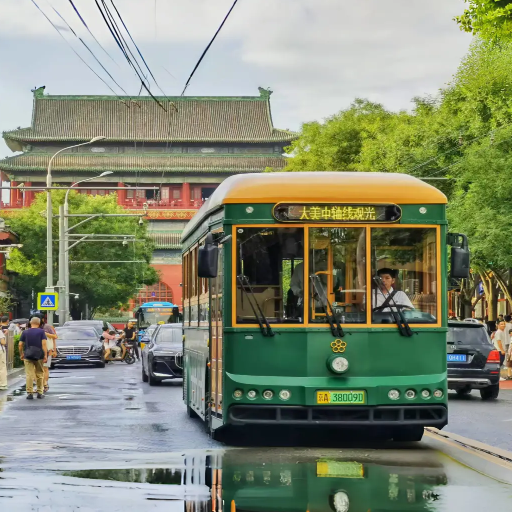
What Are the Best Beijing Bus Tours for First-Time Visitors
If you’re taking a bus tour of Beijing for the first time, focusing on the cultural and historical significance of the city, then visiting landmarks like the Great Wall of China, The Summer Palace, The Forbidden City, and Tiananmen Square are a must. Several of these tours include professional guide services to construct the tours’ context, making these tours both informative and pleasant. Some packages also come with flexible, hop-on, hop-off packages where travelers can explore freely. Some packages are geared towards immersion and include hutong visits and tea ceremonies.
Exploring the Great Wall by Bus
These tours allow travelers to conveniently and economically reach popular sites like Badaling, Mutianyu, and Jinshanling. Numerous regular bus routes and tours depart from central Beijing, making it easier than ever for first-time visitors to visit the Great Wall.
Key Questions Addressed:
- What are the available bus options?
- Direct tour buses leave from landmarks like The Dongzhimen and Qianmen.
- Standard buses also provide low-cost options. The 877 bus goes to Badaling, and the 916 Express to Mutianyu.
- What are the ticket prices and durations?
- The round-trip tourist bus usually costs $20-50 USD and includes entrance fees. It typically runs for 1.5 to 2 hours in each direction.
- One-way public buses usually cost between $2-5 USD; however, you may need to use local transportation, such as shuttles.
- Are there aspects to consider?
- Departure Times: Tourist buses often leave early (6-8 AM), while public buses run on fixed daily schedules.
- Accessibility: Check whether or not public transport is as crowded during peak vacations as it may be during those times.
- Seasonal Adjustments: Pre-booking is advised to account for changed schedules or travel times during winter months.
- Is there additional flexibility?
- For better accessibility, commentary and meals are provided along with a skip-the-line policy.
Considering these factors, the best Grand Wall offering would be independence, ease, and a limited budget.
Must-See Stops: Forbidden City and Tiananmen Square
Located in the middle of Beijing, The Forbidden City and Tiananmen Square are among China’s most famous historical and cultural sites. There’s no doubt that these two attractions are a must-visit from the perspective of history, politics, and culture for any tourist traveling.
Forbidden City
Today, the Palace Museum is also known as the Forbidden City. During the Ming and Qing dynasties, it was an imperial palace, but it is now part of the Palace Museum. The Palace Museum represents a masterpiece of ancient Chinese architecture, with over 9,000 rooms covering 180 acres of land. The Hall of Supreme Harmony Imperial Garden and the Treasure Gallery are some highlights worth exploring. Its grandeur can be appreciated in 2 to 3 hours.
Visitor Tips:
- Opening Hours: 8:30 AM to 5 PM (varies by season). It is closed on Mondays (except public holidays).
- Admission Fees: ¥60 from April to October, ¥40 from November to March. Unique displays like the Treasure Gallery have additional costs.
- Note: You should reserve tickets ahead of time to ensure access, as the limit of 80,000 visitors a day can be a hassle.
Tiananmen Square
Tiananmen Square and other monuments, such as the Emperor’s Wu Gate, the National Museum of China, and Mao Zedong’s Mausoleum, remind us of China’s turbulent history. The square, which spans over 44 hectares, is located next to the Forbidden City and is also the site of flag celebrations and significant historical tourist attractions.
Visitor Tips:
- Best Time to Visit: Early morning to catch the flag-raising ceremony.
- Admission Fees: The square is free to enter, however some interior sections, like Mao’s Mausoleum, charge a fee.
- Security Checks: Entry into the square will be subject to a basic security check. Large bags are not permitted.
For a wonderful imperial experience filled with rich history, you can explore the Forbidden City and the square, accessed from the Meridian Gate.
Highlights of a Beijing City Day Tour
If you want to start exploring Beijing, I suggest visiting Tiananmen Square in the morning. There, you may find helpful information to help you understand modern Chinese history. After that, you may find it interesting to explore the Meridian Gate and the Forbidden City, which is known for its massive collection of palaces forming an architectural complex recognized as a UNESCO World Heritage site.
For your next stop, I recommend checking out Jingshan Park, which offers a magnificent view of the Beijing skyline. I recommend trying Peking duck, which tastes exceptional at local restaurants during lunch.
During the lack portion of your visit, check out the Temple of Heaven, a stunning temple with cherry blossom trees. If time is over, checking out the summer palace is a must. The area is filled with mesmerizing gardens, lakes, and scenery. Make sure you check your available transportation options to save time. I found using the subway or a private car the best choice.
How Does a Beijing Sightseeing Bus Tour Work?
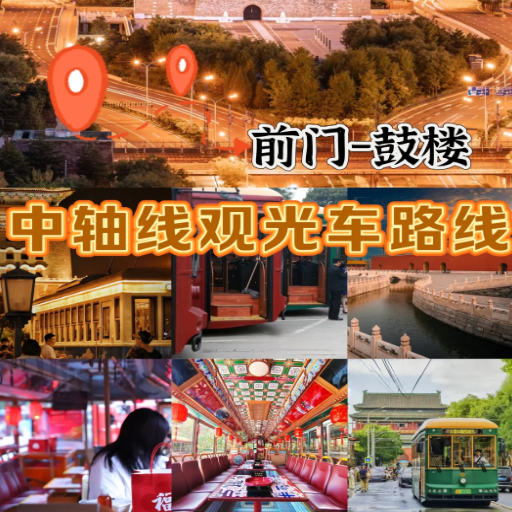
How Does a Beijing Sightseeing Bus Tour Work
Exploring the primary areas of interest in Beijing can be done through an organized tour called the Beijing Sightseeing Bus Tour. It’s done through a hop-on, hop-off system, allowing patrons to visit whichever landmarks interest them the most. The buses all follow set paths that go to the significant points of interest, which include the Forbidden City, the Great Wall, and the Temple of Heaven. Tickets for this tour are most commonly bought at bus stops, through hotels, or online. A comfortable experience is made even easier by the available English audio guides, maps, and outline of the day’s agenda.
Understanding the Beijing Hub of Tour Dispatch
In the above section, we noted The Beijing Hub of Tour Dispatch. It is a key systematizer of a great many services of touristic character in the city. For both resident and foreign travelers, it simplifies the combination of transport, history, and culture of the city. For a more detailed comprehension of the elements involved, see the following questions and their respective answers:
- How does the hub function?
This hub is located in one of the main tourist places in the city. Buses follow set routes that stop at significant sites such as the Forbidden City, the Great Wall, and the Temple of Heaven. Tickets can usually be purchased online, at bus stops, or through your hotel. English audio guides, maps, and schedules are often provided. This service works like a classic source of information and organizes the work of numerous touristic and non-touristic entities, such as transport and ticket structures. Thanks to efficient control and routing systems, it guarantees timely departure and suitable travel itineraries.
- What types of vehicles are utilized?
The fleet generally consists of double-decker buses with 65-85 passengers capacity, minibusses for small groups of up to 20 passengers, and regular city buses. All vehicles are fitted with GPS trackers and multi-language audio systems.
- What are the main technical features?
- Real-time tracking: GPS and real-time updates via mobile applications.
- Audio guide: A pre-recorded description of the landmark in various languages, such as English, Mandarin, and more, can be provided.
- Capacity management: Automated ticketing systems for checking and controlling available seats.
- How can travelers purchase tickets?
Tickets are available on the official website, on-site at ticket booths at main stops, and through partnered hotels. Payments are also possible via Visa, Alipay, WeChat, and Mastercard.
This system helps guarantee a fully arranged, interactive, and effortless tourism excursion in Beijing.
Typical Bus Routes and Stops
Traveling by the Beijing tourist bus is one of the most time-efficient ways to visit the top-rated attractions. Some routes and their important stops are stated below:
- Route 1 – Historical Highlights
- Stops include The Forbidden City, Tiananmen Square, the Temple of Heaven, and the Summer Palace.
- Operating Hours: 8:00 AM to 6:00 PM.
- Frequency: Every 15 minutes.
- Multilingual audio guides and air-conditioned buses with 40-50 seating capacity.
- Route 2 – Cultural and Modern Beijing
- Stops feature the National Museum of China, Bird’s Nest Stadium, Water Cube, and 798 Art Zone.
- Operating Hours: 9:00 AM to 7:00 PM.
- Frequency: Every 20 minutes.
- Eco-friendly hybrid buses, onboard Wi-Fi, and USB charging ports.
- Route 3 – Scenic Getaway
- Stops include the Great Wall at Badaling, Ming Tombs, and Juyongguan Pass.
- Operating Hours: 7:00 AM to 5:00 PM.
- Frequency: Every 30 minutes.
- Long-distance coaches with big luggage compartments and reclining seats.
The buses have been modified with ecological protection in mind. Covering all routes provides the best experience with modern and historical attractions and seamless navigation through all landmarks. Maps and brochures that outline every significant point of interest are also provided for each traveler for every route.
Role of a Tour Guide on a Beijing Bus Tour
When working with the Beijing Bus Tour, I ensure that your travel experience is entertaining and educational, allowing me to give interesting explanations and historical contexts and even tackle any queries regarding the destination. I try to ensure that everyone on the tour feels welcomed and informed. I share amazing stories regarding peculiar landmarks such as the Burning City, The Great Wall, and the Summer Palace. On top of that, I manage the plan to make sure that the times for the stops are kept and that I respond to any logistical requirements, such as guiding how tickets work or dealing with the bags.
- Multilingual audio systems for diverse guests.
- Portable microphones for clear communication during stops.
- Tour guide lanyard and identification for easy recognition.
- Emergency contact and support systems for guiding group safety.
I sincerely and genuinely hope that through my efforts, you undertake a seamless, engaging, and informative experience as you navigate through Beijing, inviting its deep culture and history.
Which Tourist Bus Options Include the Great Wall of China?
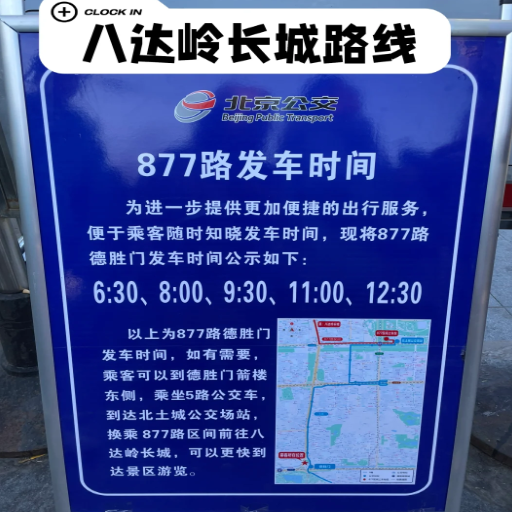
Which Tourist Bus Options Include the Great Wall of China
Different bus trips, including a stop at the Great Wall, are available to suit various needs. Most packages stop at the Badaling, Mutianyu, and Juyongguan sections. These services are usually provided as part of a full-day guided tour, including the Ming Tombs or the Summer Palace in Beijing. Many companies offer the convenience of round-trip transport, entrance tickets, and a tour guide for most other services. Don’t forget to book beforehand and check the plan to achieve your desired Great Wall excursion.
Exploring Mutianyu Great Wall by Bus
Traveling towards the Mutianyu section of the Great Wall is hassle-free with the bus service provided. Most people rely on the express 916, which is available directly from Dongzhimen or combines well with a short local taxi ride. Below is some helpful information to help make the trip easier:
- Bus Route: Take the 916 Express to Dongzhimen Bus Station and get off at Huairou North Street (about 60 km away). From there, take a local taxi to the Mutianyu entrance, which will take 15-20 minutes.
- Travel Time:
- Bus Travel: Around 60-70 minutes from Dongzhimen.
- Secondary Transfer (Taxi): It takes about 15 minutes depending on the traffic.
- Cost:
- Bus Ticket (One-way): Approximately ¥12 (using transit card for discount).
- Taxi Ride (from Huairou): Around ¥40-50.
- Operating Hours:
- 916 Express operates from dawn until nightfall, giving customers the choice of flexible departure times.
- Check for entry Mutianyu Great Wall hours, generally from 7:30 AM to 5:30 PM; seasonally, they might change.
- Additional Notes:
- Check transport return options in advance, particularly in the countryside, as they may become limited in the late hours.
- If bundled services with some comfort level are preferred, consider using private shared shuttles or tourist buses.
This way, tourists can plan their visit to Mutianyu while enjoying comfort, affordability, and minimal time expenditure.
Visiting the Badaling Great Wall on a Day Tour
The Badaling section of the Great Wall is my absolute favorite because it is straightforward to travel to. It is also a good wall of the Great Wall. I suggest getting there in the wee hours to avoid the crowd, especially during peak seasons. Not only is there public transport in the section, but there are also private cars and tour buses. The wall is about 70 kilometers (43 miles) from Beijing. The best way to reach it is by using the S2 train, which leaves from Beijing North Railway Station and goes to Badaling for about 1.5 hours. If you prefer to travel by bus, line 877 takes about 1.5-2 hours as it begins from Deshengmen.
If this is your first visit, I highly encourage you to get your tickets in advance because they tend to sell out during holidays. Tickets are currently around 40 RMB for adults, with seniors getting a discount, but check back frequently for updates. The ski lift offers a quick, enjoyable method of ascending to the higher areas and has a fee of 80-140 RMB, depending on options and season.
From a technical perspective:
- Altitude: An individual’s skill level is required to achieve the highest point of 888 meters (2,913 feet) above sea level.
- Distance: An individual can walk about 3.7 kilometers (2.3 miles).
I recommend bringing water and adequately fitted footwear because steep ascents make walking difficult. Many options for visitors who want to take guided tours combine transportation, tickets, and guides. These options and exceptional customer service allow visitors to enjoy a fully integrated experience in one day.
Experiencing the Jinshanling Great Wall on a Tour Package
The Jinshanling Great Wall has some of the most distinctive architectural features and breathtaking scenery of the Great Wall of China. Because of this, it is a highly recommended site for tourists. It is about 130 kilometers (81 miles) from Beijing, making it accessible for either a one-day or two-day trip. Numerous travel companies offer great deals, including both ways of transportation, access tickets, and a professional tour guide.
- Location and Accessibility: The Jinshanling Great Wall is in Luanping County, Hebei Province. Most Beijing tours begin early morning, and travel by car or bus takes 2.5 to 3 hours.
- Hiking Distance and Duration: The wall can be hiked for a perimeter of 10.5 kilometers (6.5 miles), with renovated and unrenovated portions. With the correct route, some can finish the trip in under 3 hours, and others take up to 5 hours.
- Altitude and Terrain: This section’s highest point is estimated to be 700 meters (2,297 ft) above sea level. Given the steep elevation change, bends, and stair-like paths, moderate fitness is suggested.
- Tour Packages: Popular tour packages often include:
- Round-Trip Transportation: Offerings include private small vans or large buses that leave from set spots around Beijing.
- Entrance Tickets: The average entrance is ¥65-¥75 (around USD 9 10.50), but this can differ from season to season.
- Guided Tours: The well-educated guides offered will provide vital information about the region while helping you navigate the trail.
To adapt to fluctuating weather conditions, participants should wear solid hiking shoes, bring a lot of water, and dress in layers. Compared to sections like Badaling, Jinshanling is much less busy, allowing for a relaxing and more profound experience of the beautiful landscape. For those wanting the extra challenge, some packages even extend the trek towards the Simatai portion of the Wall for a longer walk.
Can You Combine Sightseeing Tours with a Beijing City Walking Tour?
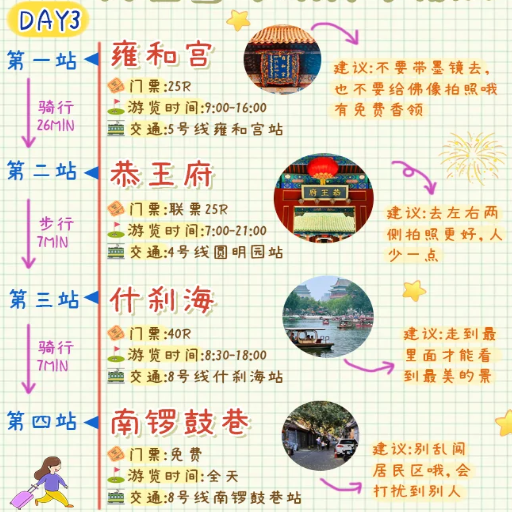
Can You Combine Sightseeing Tours with a Beijing City Walking Tour
A walking Beijing city tour can be integrated with other sightseeing tours, which is highly encouraged. Various operators provide China tours that combine Great Wall visits with walking tours of the Forbidden City, Tiananmen Square, and Beijing’s traditional hutongs and markets. This blend allows tourists to effortlessly and delightfully enjoy Beijing’s historical and cultural aspects.
Benefits of Combining Bus and Walking Tours
Combining bus and walking tours is the best solution for saving time and thoroughly understanding the local culture. Buses allow for relaxation as important sites are accessed quickly, reducing travel exhaustion and saving time. However, with guided walking tours, the local culture and some of the city’s hidden treasures can be appreciated up close and personal. Such integration comforts active tourists with the option to visit far-off sites and provides freedom to walk around busy streets, traditional hutongs, or calm parks.
Key Benefits:
- Efficiency: Bus tours quickly cover long distances, which is excellent for seeing multiple sites daily.
- Accessibility: Walking tours are less restricted as vehicles are barred from specific regions such as narrow routes and old neighborhoods.
- Cultural Immersion: Travellers can interact with locals, try out street delicacies, and walk around the market more freely.
- Flexibility: By integrating a bus tour with walking, travelers can adjust their schedules and spend more time at their favorite stops.
- Comfort: Walking offers refreshing outdoor experiences, whereas buses provide sheltered transportation essential during extreme weather.
This multifaceted approach guarantees that no aspect of a destination is neglected, all while maximizing practicality and enjoyment, ensuring an enjoyable, practical, and drawback-free experience.
Exploring Urban Sightseeing in Beijing
In my experience, urban sightseeing in Beijing is an intriguing blend of historical and modern sightseeing. The Forbidden City gives one an idea of China’s imperial history, and the Hutongs are full of local culture. Then, there is the Temple of Heaven, which combines incredible and lavish architecture with serene, peaceful nature. Sanlitun and the CBD are places to showcase Beijing’s more modern side.
Walking enhances cultural appreciation, but I found the Beijing Subway efficient. It is affordable, starting at 3 RMB, depending on distance, and convenient for reaching essential sites. I could combine this with the bus tours I occasionally took to see more of the city at my own pace while still making sure I visited the notable places.
Top Attractions in and Around Beijing on Foot
Beijing suddenly opens new portals to the past with breathtaking experiences connected to its culture and history. The first place I visited was the Forbidden City, a UNESCO World Heritage site, which was terrific in its architecture and why it was so profoundly imperial. Give yourself 3-4 hours to walk around the area as you take in the immense beauty of the place. Afterward, you can make a quick pit stop at Tiananmen Square, next to the Forbidden City, which is a grand sight. Another impressive sight is the Summer Palace, where the serene waters and beautifully crafted gardens give the essence of calm. Be sure to wear comfortable shoes when exploring the sites since they are so big – on average, each site requires 2-5 hours to appreciate. Whether stepping out on the streets or walking around the imperial places, these locations are best enjoyed with no rush.
What Are the Advantages of a Private Tour Versus a Group Tour?
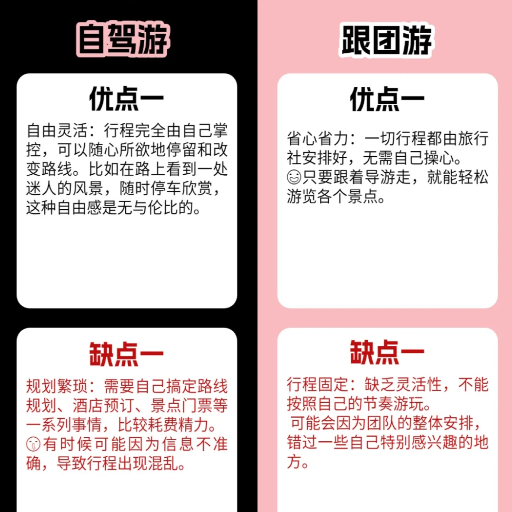
What Are the Advantages of a Private Tour Versus a Group Tour
Private tours allow you to plan the experiences you want to partake in and set a convenient pace. You engage more with your guide, which increases the information provided and ensures that everyone is actively involved. Group tours pay less for something equivalent, allowing them to meet new people. It is also true that there is a more rigid program. The choice depends on your values, privacy flexibility, savings, and intercultural exchange.
Personalized Experiences in Private Tours
Private tours allow you to focus directly on your areas of interest, allowing you to have a uniquely tailored experience. Your itinerary is custom-made, and you only visit those locations or participate in those activities you are interested in. Furthermore, your guide can control the pace of the tour, and you can decide whether to have a more relaxed and in-depth exploration of the surroundings or a quick overview.
Key Advantages of Personalized Private Tours:
- Flexible Itinerary: schedule and locations can be altered depending on the participant’s interests.
- Depth of Engagement: Personal attention provides an opportunity for profound comprehension of the places and their history.
- Pace Customization: This option is best for families with toddlers, elderly travelers, or anyone who needs to follow a specific schedule.
- Exclusive Access (where applicable): Opportunity to visit hidden or lesser-known sites or partake in unique activities unavailable to bigger groups.
Private tours are recommended for those who wish to travel at their own pace in a stress-free, personalized setting.
Social Aspects and Cost Benefits of Group Tours
Economic group tours have emerged as one of the most popular means of travel because of their added social element. One key benefit is interacting with people who share common interests, where travelers can appreciate their experiences, enhance their morale, and create memories that stay with them forever. For travelers on their own, this part of the tour can significantly reduce feelings of loneliness and foster a sense of belonging.
Economically, tours are financially easier to maintain because transport, accommodation, and guide costs are lumped into one fee paid by everyone. This low pricing makes it possible to hire experienced professional guides who provide excellent services accompanied by in-depth knowledge and proper arrangements, which are difficult to enjoy with personal, expensive tours. Also, there are packages offered by local service providers which are not available to independent tourists, thus group tours are more strapped with such offers.
This is an additional ease brought about by the group tour. Unlike independent travelers, they do not need to think of plans, tickets, and even languages because the organizer will arrange everything. This type also uses time because they follow a particular order of the most critical places and activities.
Group tours are excellent for individuals who want to balance budget and social interactions. They offer practicality and the opportunity to experience new adventures in a new setting.
Choosing the Right Tour Package for You
Choosing which tour package is the most suitable for me depends on my travel needs and preferences. Initially, I reviewed my budget to evaluate the spending amount, considering both fixed expenses and ancillary costs such as gratuities or optional sightseeing tours. Then, I checked the itinerary to see if it included the crucial destinations and activities for me. My concern is tour schedules that ensure adequate time to cover the sites without the anxiety of being time-constrained.
Another critical point to consider is the group size; small groups generally guarantee more individual treatment, while large groups are more appealing from a socialization and economic point of view. Other inclusions, like accommodation, meals, transportation, and entrance fees, are also checked to eliminate unpleasant surprises. Ultimately, the most helpful way to estimate the tour operator’s reliability is through the tour participants’ reviews and ratings.
Aspects to focus on:
- Group Size—Select a number (e.g., 8-15 for small groups or 20+ for larger groups) based on how close or expensive you are comfortable with.
- Travel Pace – Look out for the type of travel, easygoing or hectic.
- Accommodation Type—Choose what best suits your desired comfort level, such as budget hotels, luxury resorts, or unique accommodations.
- Cancellation Policy – Choose less restrictive policies and offer refunds or alterations in case of emergencies.
- Language Support – Ascertain that the tour offers guides who can speak your language if required.
By comparing these attributes across various options, I can select a tour package that meets my needs, allowing for a smooth and delightful experience.
References
Frequently Asked Questions (FAQ)
Q: What is the best way to explore Beijing’s attractions, such as the Summer Palace and the Temple of Heaven?
A: One of the best ways to explore Beijing’s attractions, including the Summer Palace and the Temple of Heaven, is to join a classic Beijing or full-day tour. These tours often include transportation and a knowledgeable tour guide to enhance your experience.
Q: How can I buy tickets for a Beijing tourist bus?
A: Tickets for a Beijing tourist bus can be purchased at various ticket offices around the city, including the Tiananmen dispatch center and the ticket office of the Beijing hub. Some tour packages also allow you to buy tickets online for convenience.
Q: What is included in a one-day tour package in Beijing?
A: A one-day tour package in Beijing typically includes transportation via a tour bus, entry to major attractions like the Ming Tombs, Temple of Heaven, and Summer Palace, and sometimes even meals. A tour guide and driver are usually part of the package to provide insights and ensure smooth travel.
Q: Are public bus options for visiting the Mutianyu Great Wall from Beijing?
A: Yes, public bus options are available to visit the Mutianyu Great Wall from Beijing. However, for a more convenient and informative experience, many travelers opt for a tour, which includes transportation and a tour guide.
Q: Can I explore the highlights of Beijing using a shuttle bus service?
A: Yes, shuttle bus services are available in Beijing, allowing you to explore city highlights efficiently. These buses often cover major tourist spots and provide a comfortable way to see the city.
Q: What are some popular bus lines for a day bus tour in Beijing?
A: Popular bus lines for a day bus tour in Beijing include routes that cover iconic locations such as the Forbidden City, Temple of Heaven, and Summer Palace. These lines are designed to maximize sightseeing within a day.
Q: Is taking a public bus or joining a private day tour in Beijing better?
A: Whether to take a public bus or join a private day tour in Beijing depends on your preferences. A public bus is more affordable and offers flexibility, while a private day tour provides personalized service, comfort, and insights from a guide.
Q: What are some recommended activities in Beijing besides bus tours?
A: In addition to bus tours, recommended activities in Beijing include exploring the bustling markets, trying local cuisine, visiting historical sites like the Forbidden City, and walking through the vibrant neighborhoods of Beijing’s downtown.
Q: How does the Ring Road of Beijing affect bus transportation in the city?
A: Beijing’s ring road facilitates efficient bus transportation by providing well-connected routes that encircle the city. This infrastructure helps manage traffic and offers convenient access to various attractions in Beijing.